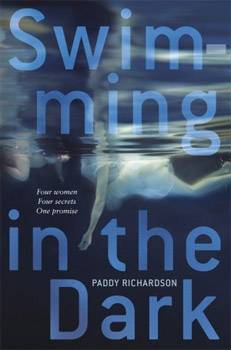Swimming In The Dark

Swimming In The Dark
In a small New Zealand town, four women find their lives inextricably linked by a secret that could bring about their undoing... or set them free.
Serena Freeman, a once-promising high school student, has started to retreat from life and one night does not return home. Her sister, Lynnie Freeman, is carving out a successful career and is desperate to distance herself from her troubled past. But on hearing of Serena's disappearance, Lynnie is forced to return to the town of Alexandra to look for her.
The only link to Serena's disappearance is Ilse Klein, a quietly dedicated English teacher who longs for her lost childhood in Germany and the sense of belonging it gave her. She lives with her mother, Gerda Klein, who is beset by a devastating depression each winter and plagued by memories of Stasi Germany. The Kleins learned long ago that there is safety in silence, can they break a lifelong habit?
Haunting and compelling, Swimming in the Dark explores the nature of guilt and fear, the power of friendship and the strength of the human spirit.
Paddy Richardson is the author of six novels and two short story collections. Her fiction has been a finalist for the Ngaio Marsh Award for Best Crime Novel and short-listed for the BNZ Katherine Mansfield Awards. She has been the recipient of the University of Otago Burns Fellowship, the Beatson Fellowship, and the James Wallace Arts Trust Residency Award. Four of her novels have been translated and published in Germany. Paddy has lectured and tutored English Literature at university level and taught many creative writing courses. She lives on the Otago Peninsula in New Zealand.
Swimming In The Dark
Macmillan
Author: Paddy Richardson
ISBN: 9781743531204
RRP: $29.99
Interview with Paddy Richardson
Question: What originally inspired the idea of Swimming In The Dark?
Paddy Richardson: In 2012 New Zealand was the guest country at the Frankfurt Book Fair and I was lucky enough to be one of the writers invited to the 'fore-runner' - the Leipzig Book Fair. Quite frankly, I fell in love with Leipzig. It's such a charming city; the main square is like something out of a fairy-tale with the cobbled streets and the beautiful old buildings. As a contrast, there is still a strong sense of the Soviet occupation in the rows of apartment buildings built during their time in East Germany. I was so intrigued by the city I knew I had to use it in a novel.
Question: Can you talk us through the process of creating the character of Lynnie?
Paddy Richardson: Lynnie largely created herself! When I first began writing Swimming In the Dark, I intended Ilse to 'tell' the story. Somehow, though, Serena demanded her own voice and what was to be a prologue turned into a substantial part of the book. And then I had her sister Lynnie in my head also wanting her own voice. I love Lynnie as a character; she's strong, stroppy, brave and, though vulnerable, prepared to fight back.
Question: Can you talk us through how the Leipzig and Frankfurt Book fairs inspired characters in this novel?
Paddy Richardson: During my time in Leipzig I visited the Stasi museum which is housed in the old Stasi headquarters. There are exhibitions of the spying devices which were used, rooms which were used for interrogations, detention cells and chilling accounts of what happened to people who were held there. I used what I saw and subsequently found out about the Stasi and life in East Germany before reunification to create the characters of Gerda and Horst. Leipzig, though, is also the beautiful city, which Ilse, their daughter, grows up in. As a young child who unquestioningly absorbs the lessons she is taught at school, she's forced to leave behind her friends, her extended family, everything she is familiar with. She bitterly resents that and suffers terribly from homesickness.
Question: There are several issues and lessons raised in this book. Was this deliberate or did the story evolve this way?
Paddy Richardson: The story evolved in ways which surprised me. I started with the idea that Serena would be a student in Ilse's class who was bullied and, because of Ilse's past experience in Leipzig, she is afraid to help. My original intention was to show the long term effects on my characters of a background in a political situation which threatened their personal freedom. But then Serena's character developed much more strongly and with that came the more extreme form of abuse she experiences and I found myself making parallels between the misuse of power in East Germany and in a small New Zealand town where a prominent citizen is able to use his position to dominate and terrorise. At the same time, my main characters emerged as very strong women who, combined, become very powerful, much in the way that the general populace in Leipzig finally drew together and brought down the East German government. I also found myself exploring the concept of family and how that can be a strong positive force as well as a negative one and, in the end of my novel it seems that the women create their own family. So, yes, there are strong issues here but these mainly evolved through the writing of the novel.
Question: Did the suspense develop naturally with the story or was this something, as a writer, you were focused on achieving with text?
Interview by Brooke Hunter
MORE





